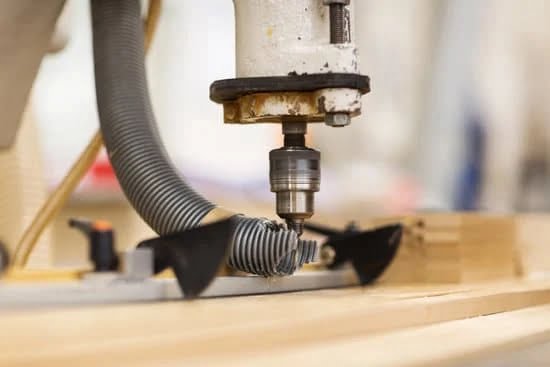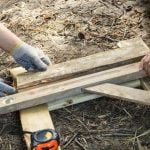Are you passionate about woodworking but live in an apartment? Finding adequate space and managing noise levels can be challenging. In this article, we will explore the various options and innovative solutions for woodworking enthusiasts who reside in apartment buildings.
Woodworking in an apartment presents unique challenges due to limited space and the need to consider noise levels that may bother neighbors. However, with some creativity and strategic planning, it is possible to enjoy woodworking activities even in a small living space. Finding suitable locations for woodworking activities is crucial for apartment dwellers looking to pursue their passion.
This article will provide insights into setting up a small workspace within the constraints of an apartment, exploring options such as joining local woodworking clubs or maker spaces, renting a studio or workshop, finding outdoor areas for woodworking, implementing DIY noise reduction techniques, utilizing online woodworking resources, and exploring creative alternatives for apartment woodworking.
Whether you are a seasoned woodworker or just starting out with this hobby, there are plenty of adaptable solutions where you can do woodworking if you live in an apartment.
Setting Up a Small Workspace
Tips for Optimizing Space
When it comes to woodworking in an apartment, space is often the biggest challenge. However, with some creativity and organization, it’s possible to carve out a small workspace for your projects. Consider using multi-functional furniture such as a foldable workbench or collapsible sawhorses that can be easily stored when not in use.
Utilize vertical space by installing wall-mounted storage units for tools and materials. Additionally, investing in portable or compact versions of power tools can help maximize the limited space available.
Suggestions for Essential Tools and Equipment
For apartment woodworking, it’s important to prioritize essential tools and equipment that are versatile and space-saving. Some must-have items include a quality set of hand tools such as chisels, hand planes, and a Japanese pull saw. A compact drill press and a small but powerful table saw can also be great additions to your apartment workshop.
Consider investing in high-quality clamps that can handle a variety of tasks while taking up minimal space. Finally, having efficient dust collection systems in place is crucial for maintaining a clean and manageable woodworking environment in an apartment setting.
DIY Noise Reduction Techniques
One of the biggest concerns of woodworking in an apartment is the noise factor. Fortunately, there are various DIY noise reduction techniques that can help minimize disturbances to neighbors. Using thick rubber mats under equipment and workbenches can absorb vibrations and reduce noise transmission.
Building soundproof enclosures for loud machinery such as planers or routers can also significantly decrease noise levels. Additionally, choosing quieter operating tools when possible, such as hand tools instead of power tools, can help keep noise to a minimum where to do woodworking if you live in an apartment.
Community Woodworking Spaces
Joining Local Woodworking Clubs or Maker Spaces
For apartment dwellers who are passionate about woodworking but lack the space to pursue their hobby at home, joining local woodworking clubs or maker spaces can provide an excellent solution. These communal facilities often offer access to a wide range of tools and equipment that may not be feasible to own in a small apartment. Additionally, they provide opportunities to connect with other woodworking enthusiasts, share knowledge and skills, and collaborate on projects.
Benefits of Using Communal Woodworking Facilities
The benefits of utilizing community woodworking spaces extend beyond access to tools and equipment. These shared workshops also create a supportive environment for individuals to learn and grow as woodworkers. Whether it’s receiving guidance from more experienced members or simply being inspired by the work of others, the sense of community that comes with these spaces can enrich the woodworking experience for apartment residents.
Considerations for Finding Community Woodworking Spaces
When looking for local woodworking clubs or maker spaces, it’s essential to consider factors such as location, membership fees, and the available resources. Some communities may have multiple options to choose from, while others may have limited facilities.
Researching and visiting these spaces before committing is crucial to ensure that they align with one’s woodworking needs and preferences. Joining a community space can open up new doors for apartment-based woodworkers, providing access to resources and camaraderie not easily found in a private residential setting.
Renting a Studio or Workshop
For apartment dwellers who are passionate about woodworking but find it challenging to pursue their hobby in a limited space, renting a separate studio or workshop can be an excellent solution. Renting a dedicated workspace offers the opportunity to have more room for tools and materials, as well as the ability to work on larger projects without restrictions.
Many cities offer rental spaces specifically designed for artisans, woodworkers, and craftspeople, providing a suitable environment for pursuing woodworking activities without the limitations of an apartment setting.
When looking for affordable and convenient woodworking studio rentals, it’s essential to consider the location, accessibility, and amenities offered. Some rental spaces may include access to shared tools and equipment, while others may provide private workshops for individual use. Additionally, factors such as security, ventilation, and proximity to home should be taken into account when selecting a suitable woodworking studio rental.
It is important that renting a studio or workshop is still economical compared to having all expenses at your apartment.
| Aspect | Consideration |
|---|---|
| Location | Proximity to home and accessibility |
| Amenities | Access to shared tools and equipment |
| Cost | Economic viability compared to working at home |
Outdoor Woodworking Locations
For apartment dwellers, finding a suitable outdoor space for woodworking can be a game-changer. Fortunately, there are several options available for those looking to take their woodworking projects outside. One option is to find a nearby public park or open green space where woodworking can be conducted. Many parks have designated areas for DIY activities, including small-scale crafting and woodworking. These spaces provide ample natural light and ventilation, creating an ideal setting for woodworking activities.
Another outdoor option for apartment-based woodworkers is the use of balconies or terraces. While these spaces may not offer as much room as a traditional workshop, they can still serve as practical outdoor locations for smaller woodworking projects. With the appropriate setup and safety precautions in place, balcony woodworking can provide apartment dwellers with a convenient and peaceful alternative to indoor woodworking.
Additionally, some urban areas have communal gardening or community workspaces that may accommodate outdoor woodworking activities. These shared spaces often provide opportunities for residents to engage in various DIY projects, including gardening and carpentry. By connecting with local community organizations or neighborhood associations, apartment residents may gain access to these outdoor spaces for their woodworking endeavors.
Overall, leveraging outdoor locations for woodworking can offer apartment dwellers the benefits of natural light, fresh air, and minimal noise disturbance. Whether it’s a nearby park, a personal balcony, or a communal garden area, exploring outdoor options can enhance the woodworking experience for individuals living in apartments.
Furthermore, taking advantage of outdoor areas is not only practical but also opens up possibilities for creativity and inspiration while working on woodworking projects. Whether it’s the sight of nature or the feeling of openness that one seeks in their workspace – tapping into outdoor environments provides an exciting alternative solution to conducting woodworking activities in confined indoor settings such as apartments.
DIY Noise Reduction Techniques
Woodworking in an apartment setting often comes with the challenge of minimizing noise to avoid disturbing neighbors. Fortunately, there are several DIY noise reduction techniques that can help create a more comfortable environment for woodworking activities. Here are some tips for minimizing noise during woodworking activities in an apartment:
1. Use sound-absorbing materials: Consider investing in sound-absorbing materials, such as acoustic panels or foam, to reduce the transmission of noise within your apartment. These materials can be easily installed on walls or ceilings to help dampen the sound of woodworking tools and equipment.
2. Create a designated work area: Designating a specific area within your apartment for woodworking can help contain noise and minimize its impact on neighboring units. Set up your workspace in a room with the least amount of shared walls or consider positioning it away from adjacent apartments to reduce the likelihood of noise disturbance.
3. Time your woodworking activities: Be mindful of the time when engaging in woodworking activities to be considerate of neighbors. Avoid working late at night or early in the morning when noise is more likely to be disruptive.
4. Utilize noise-reducing tools: Invest in woodworking tools that are designed to minimize noise, such as quieter power tools or hand tools that produce less sound during use.
By implementing these DIY noise reduction techniques, woodworkers living in apartments can create a more conducive environment for pursuing their passion without causing undue disturbance to those around them.
Overall, finding ways to mitigate noise is crucial for apartment dwellers undertaking woodworking projects at home. With thoughtful planning and creative solutions, it is possible to enjoy woodworking activities while being mindful of neighbors’ peace and comfort.
Online Woodworking Resources
When living in an apartment, finding enough space to set up a workshop for woodworking can be a real challenge. However, thanks to modern technology and the internet, there are numerous online resources available to apartment dwellers who are passionate about woodworking. Here are some valuable online woodworking resources where you can learn and engage in woodworking activities without needing a dedicated physical workspace:
- Virtual Woodworking Communities: Joining virtual woodworking communities can provide apartment woodworkers with a sense of camaraderie and support. Platforms like Reddit’s r/woodworking or social media groups dedicated to woodworking offer opportunities to connect with fellow enthusiasts, share knowledge, and seek advice on apartment-friendly woodworking techniques.
- Online Courses and Tutorials: Many websites offer comprehensive online courses and tutorials specifically tailored for individuals who want to pursue woodworking in limited spaces. Platforms such as YouTube, Skillshare, or Udemy host tutorials on small-space woodworking projects, creative storage solutions for tools, and noise-reducing techniques suitable for apartment environments.
- Digital Woodworking Plans and Blueprints: For apartment woodworkers looking for project ideas that fit their space constraints, various websites provide digital plans and blueprints for small-scale woodworking projects. These resources often include step-by-step instructions, measurements, and material lists for creating furniture pieces and decorative items that are suitable for apartment living.
Engaging with online woodworking resources not only allows apartment residents to pursue their passion for crafting wood but also provides them with the knowledge and inspiration needed to create meaningful woodworking projects within the confines of their living space. With the wealth of information available online, apartment woodworkers can explore new techniques, stay connected with a community of like-minded individuals, and continue honing their skills without the need for a traditional workshop setup.
Creative Alternatives for Apartment Woodworking
Apartment living may present challenges for individuals who are passionate about woodworking, but there are creative ways to pursue this hobby even in limited spaces. One innovative solution is to utilize multi-purpose furniture that can double as a woodworking workspace. Furniture pieces such as foldable tables or desks can be used for woodworking projects and easily folded away when not in use. Additionally, wall-mounted tool storage and workbenches can help maximize the available space in a small apartment.
Another creative alternative for apartment woodworking is to make use of vertical space. Installing shelving units or pegboards on the walls can provide efficient storage for tools and materials, while also creating a designated area for woodworking activities. By utilizing the vertical space in an apartment, woodworkers can keep their workspace organized and functional without taking up valuable floor space.
For apartment dwellers seeking outdoor areas where woodworking can be done, local parks or community gardens can provide a peaceful and natural setting for woodworking projects. Many cities also have designated public workshops or maker spaces where individuals can rent a workspace equipped with the necessary tools and equipment for woodworking. These communal facilities offer a convenient solution for apartment residents who may not have space at home to pursue their woodworking hobbies.
In addition to these creative alternatives, online resources and virtual communities play a valuable role in supporting apartment-based woodworkers. Online platforms provide access to virtual workshops, tutorials, and forums where enthusiasts can connect with like-minded individuals and share their woodworking experiences. These digital resources offer valuable guidance and inspiration for apartment woodworkers looking to enhance their skills and pursue their passion within the constraints of limited living spaces.
| Creative Alternatives | Description |
|---|---|
| Multi-purpose furniture | Foldable tables or desks that double as a workspace |
| Vertical space utilization | Shelving units or pegboards for efficient storage |
| Outdoor areas | Local parks or communal workshops as alternative locations |
| Online resources | Virtual workshops, tutorials, and forums for support |
Conclusion
In conclusion, finding suitable spaces for woodworking activities in an apartment setting can be a challenge, but there are various solutions and strategies to overcome these obstacles. By optimizing small workspaces, utilizing community woodworking facilities, renting separate studios or workshops, exploring outdoor locations, implementing DIY noise reduction techniques, and tapping into online resources, apartment dwellers can continue to pursue their passion for woodworking.
The future of woodworking in apartment living is promising, with the growing trend of apartment-friendly woodworking solutions. The availability of communal woodworking spaces and shared workshops provides opportunities for enthusiasts to access necessary tools and equipment without compromising living space. Additionally, the option of renting affordable and convenient woodworking studio spaces allows for a dedicated area to carry out projects.
As more people embrace apartment living and pursue creative hobbies like woodworking, innovative ideas and unconventional locations will continue to emerge. With the use of online platforms and virtual communities, apartment-based woodworkers can connect with like-minded individuals, access educational resources, and seek inspiration for their projects. Ultimately, the potential for creative and fulfilling woodworking experiences in limited spaces is within reach for those who are passionate about this craft.
Frequently Asked Questions
Can I Do Woodworking in My Apartment?
Woodworking in an apartment can be challenging, but it is possible with some adjustments. Using hand tools instead of power tools can help reduce noise and space requirements. It’s also important to consider ventilation and dust control.
How Do You Have a Workshop When You Live in an Apartment?
When living in an apartment, having a workshop requires creativity and compromise. Consider using a designated corner of a room or setting up a workbench that can be easily stored when not in use. Utilizing storage solutions for tools and materials is crucial in maximizing space.
How Do You Woodwork With No Space?
Woodworking with limited space requires careful planning and organization. Investing in versatile and compact tools, such as a multi-function workbench or hand tools, can help optimize the available space. Additionally, utilizing vertical storage solutions and keeping clutter to a minimum is essential for an efficient workspace.

Hi everyone! I’m a woodworker and blogger, and this is my woodworking blog. In my blog, I share tips and tricks for woodworkers of all skill levels, as well as project ideas that you can try yourself.





